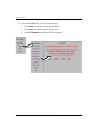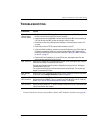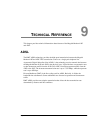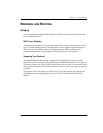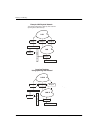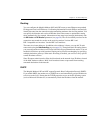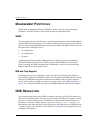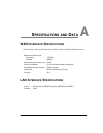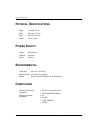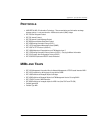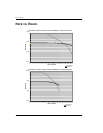
Chapter 9: Technical Reference
Megabit Modem 410F and 420F User Manual 71
Routing
You can configure the Megabit Modem 410F and 420F router to route Ethernet-encapsulated
IP datagrams based on IP addresses. Use Routing Information Protocol (RIP) to automatically
identify the route from the connection on the transmitting modem to the receiving modem. You
can specify the direction and version of RIP that allows other routers to update their routing
tables automatically (for example, information on how many hops between destinations) with
the
RIP Version and RIP Direction parameters (see page 50). The version of RIP you select for the
connection must match the version on the receiving modem. Versions RIP 1 and
RIP 1 compatible use broadcast. Version RIP 2 uses multicast.
The router also learns addresses. In addition to the addresses it learns, you can add 32 static
route entries using the
Static Route Entry page (see page 51). Through the static IP routing feature,
you can configure the modem as an IP router with statically programmed route entries. You can
enable this function to provide broadcast filtering and to prevent eavesdropping by specifying
multiple destination gateways. When static IP routing is enabled, you can access only specific
remote IP subnets or hosts.
Since IP routers make forward or filter decisions based on the network-layer IP address instead
of the MAC hardware address, MAC-level broadcast frames are prevented from reaching
unwanted destinations in the network.
DHCP
The Megabit Modem 410F and 420F support Dynamic Host Configuration Protocol (DHCP).
If you enable DHCP, the modem acts as a DHCP server and automatically assigns IP addresses
to devices on the LAN. Ensure that the TCP/IP properties are set on the PC operating system
(such as Microsoft Windows 95) to automatically obtain the IP address from the modem.




